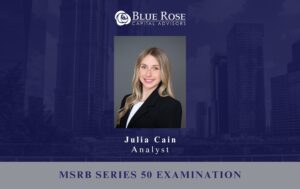The current market is allowing borrowers to realize significant interest earnings through the reinvestment of their debt service reserve funds. Because of the relatively flat yield curve environment the issue of negative arbitrage is diminishing and, in some cases, non-existent. In many cases, reinvesting debt service reserve funds is slightly more complex than reinvesting other funds because many borrowers could be subject to margin calls.
Typically, reserve funds are required to be maintained at or within a small deviation of their initially funded amount. As a result, reserve funds that are invested in products that are subject to mark-to-market requirements creates the risk that a borrower will need to contribute dollars to return the reserve fund to its required amount. These margin calls can occur when the reserve fund is invested in securities. Since the borrower is required to mark-to-market the securities, if the value of the securities fall below the required deposit, they must replenish this shortfall. Notably, as interest rates rise the value of the securities decreases. We have seen a rising interest rate environment for the past several months and, with the expectation of future Fed rate hikes, many market participants believe rates will continue to rise in the near future. For this reason, we have seen heightened concern around margin calls for reserve funds despite the higher yield that can be earned in the current market.
There are several ways to mitigate or eliminate this risk for borrowers. Alternative reinvestment structures such as repurchase agreements and guaranteed investment structures can help borrowers avoid margin calls through the life of the agreement because the value of the agreement isn’t subject to mark-to-market valuation. However, depending on the size of the reserve fund, the credit structure of the bond issue, permitted investment structures, and the borrower’s risk appetite, these structures may not be the best option.
Alternatively, the borrower can pursue a “rollover” laddered portfolio investment strategy. Rather than investing the entire reserve fund a single longer-term security, the borrower can choose to invest in a shorter-term security. Once the security matures, the proceeds can be rolled over and reinvested at then prevailing interest rates. As the term of the security shortens, the changes to the valuation of the securities with rising interest rates become less pronounced (i.e., a smaller potential margin call requirement). In the current market, a 6-month security can still provide interest earnings of over 2%. Many borrowers may prefer this this approach rather than locking in a rate for a longer term considering the general market consensus for future interest rate increases.
If you or your issuer is considering reinvesting a reserve fund, we strongly encourage you to reach out to your Blue Rose advisor to discuss your options.
Meet our Author:
Georgina Walleshauser, Assistant Vice President | 952-746-6036
Georgina Walleshauser joined Blue Rose in 2017 as an Analyst, providing modeling, analytics, market data, and research in support of the delivery of capital planning, debt and derivatives advisory, and reinvestment services to our clients. In the role of Associate, she utilized her experience as an Analyst in a more client-facing role, while still performing much of the analysis utilized in this capacity. In her role of Assistant Vice President, she will be tasked with growing client management responsibilities, in particular ensuring that our clients’ transactions run smoothly through closing.
Media Contact:
Megan Roth, Marketing Manager
952-746-6056



